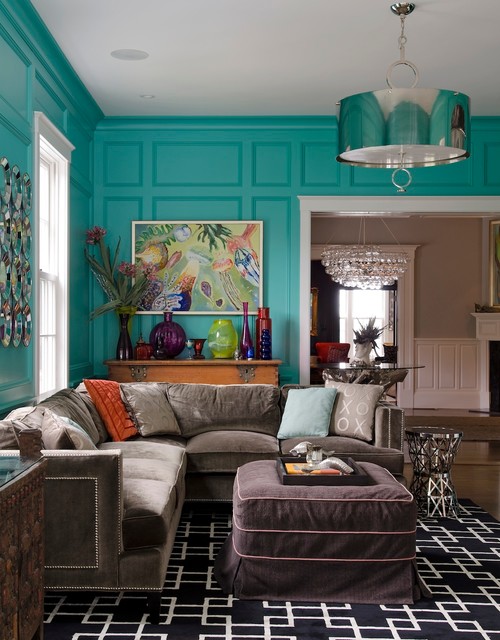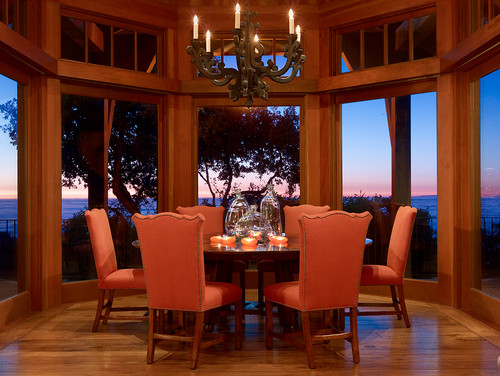Although digital cameras have made it much easier for architects, interior designers and contractors to record their work, there often comes a point when you need something a little better than what your $100 Canon can produce. Portfolios, contest entries and advertising all benefit from crisp, clear images that bring the attributes of a project to life. That's when an architectural photographer can help.
But how do you find one? What will it cost? And will there be limitations on how you can use the images afterward? We asked a few architectural photographers across the United States for guidance.
What kind of photographer do you need? Houses present their own peculiar challenges in terms of lighting, styling, perspectives and distortion, so you want to hire a photographer who specializes in them. "You don't want a photographer who does everything," cautions Jamie Salomon of James R. Salomon Photography in Portland, Maine.
There are two kinds of photographers who specialize in shooting homes: architectural photographers and real estate photographers. If you're looking to document a project strictly for selling purposes, then a real estate photographer is the way to go.
"Real estate photographers are very inexpensive," says William Wright, an architectural photographer in Seattle. "They will go through the house in less than an hour and generally don't touch anything."
But if you want photographs that capture the artistry and character of a space, Wright says an architectural photographer is your best bet. "Architectural photographers will meet with you and figure out the best approach, think about the styling, move the furniture around and put a lot more thought into getting the photos," he says.
Where to find a photographer. Of course Houzz is a good place to look for architectural photographers. Find the Houzz Photographer Network here.
The American Society of Media Photographers lists professionals by location and specialty, although membership in the organization is not an indication of whether someone is qualified or not.) Ask other home pros in your community who they would recommend as well.
Choosing the photographer who's right for you. Once you assemble some names, look on each photographer's website for a portfolio of work. Do you like the quality and character of the photos? Is the photographer accustomed to shooting projects like yours? (If the person shoots mostly hospitals, and your home is a Tudor, it might not be a good match.) Who has the photographer worked for in the past? A list of former clients is often included on the website and will indicate whether he or she is accustomed to shooting for clients like you.
Do you want to publish the photos? "Decide if you want to have the project published; that will affect the kind of photography you want to go for," says Salomon, who regularly works with art directors at 10 or 20 different publications. A photographer's connections can mean your project has a better chance of being published than with a blind submission. Architectural photographers who work regularly with shelter (home design) magazines also know what kind of look those publications like to see and will shoot in that kind of style. (Generally speaking, the shots are less wide-angle, the lighting is more natural looking, and the rooms are styled to look lived in.)
How long will it take, and what will you get? Shooting a house typically takes one day, although many photographers are willing to negotiate half-day rates if you're capturing just a room or two. A full-day shoot will generally yield eight to 20 images, depending on the project, the photographer, the amount of styling needed and the time of year. (Is the sunset at 4:30 p.m. or 8:30 p.m.?)
Who will style the shoot? Most photographers will help out with minimal styling as needed, but it's best to ask about it in advance. If major styling is required, be sure to have the designer present or hire a freelance stylist. It's also helpful for the homeowner to be present at least part of the time, to provide accessories and prevent anyone's having to rummage blindly through drawers and closets.
What will it cost? A typical architectural photographer charges between $1,000 and $3,000 per day, with most falling somewhere just north of the middle. That price includes the creative fee (the actual photography), the cost of an assistant (generally $200 to $250) and what's generally known as a processing fee.
Although today's photographers shoot digitally and no longer have to send their work out to a lab, they still have to manipulate each photo individually, adjusting the lighting and color, removing distractions like motion detectors or stray electrical cords, and often piecing together the best attributes of several images to create one perfect composition. The cost for this processing may be calculated per photo or per shoot, but generally adds anywhere from $40 to $90 per image to the cost of the shoot.
When negotiating fees with a photographer, make sure you ask whether the cost of an assistant and processing fees are included in the price.
After the shoot the photographer will usually give you the photos on a disc or flash drive, and/or allow you to download them from an FTP site. Images will often be furnished in several sizes and formats.
Who owns the photos? Unless you've made arrangements in advance, the photographer retains the copyright to his or her work. You will be granted permission to use the photos for advertising or promotional purposes, or to post images on sites like Houzz. But if a third party, like a magazine or a manufacturer, wants to publish the images or use them as part of an ad campaign, that usage must be negotiated with the photographer, who may seek additional compensation.
If you want to own the images outright, with no restrictions, the photographer will typically request an additional fee equivalent to the creative fee (the part of the bill related to doing the actual photography).
"A professional brings a lot to the table," says veteran architectural photographer Susan Gilmore of Minneapolis. "Considering [the designer] could win awards for this or use it for advertising, it's not a lot of money. The better a project looks, the more work it'll bring."
Also See:















